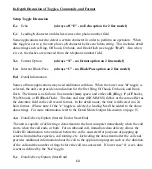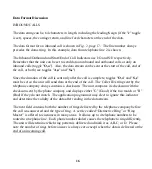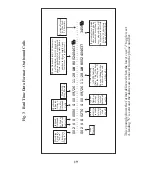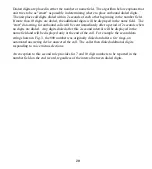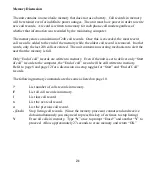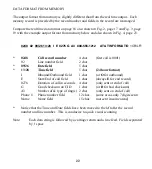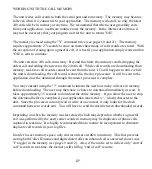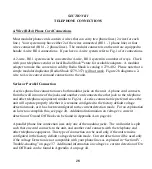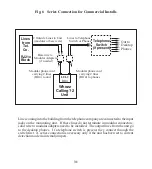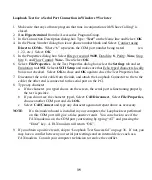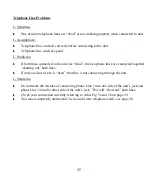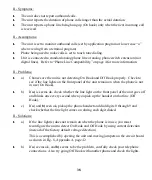
26
General Application Notes
AUTOMATIC SEARCH FOR UNIT
The user of your software application may not know the COMM port number or Interrupt
(IRQ) value of the serial port in which the unit is connected. We recommend a search routine
that tries different combinations of COMM port numbers and IRQ values to find the unit. For
each combination your software should send an "@" symbol; the unit will respond with a "#"
symbol. This automatic search will help minimize serial communication support. To further
help with initial computer connections, you might consider a quick link to a simple terminal
program preset at the correct serial parameters (9600, N, 8, 1).
SENDING SETUP TOGGLES TO UNIT
A design limitation of the unit is that it can only send or receive data at one instant.
Therefore, the unit must be idle when your application sends setup toggles. Also, the master
processor of the unit must have enough time to read a toggle and write it to memory before it
can receive another. Your application software must allow at least 50 milliseconds between
toggles being sent.
Setup toggles are stored in non-volatile memory. The master processor retrieves these toggles
and sends them to the 2 slaves processors during the power-up sequence. When toggles are
changed by the application software after power-up, the slaves will receive these changes only
when they request the toggle status. Slaves request the toggle status during extended periods
of inactivity. Depending on the processor cycle time a change in a toggle after power-up may
take as long as 2 minutes for the slave to recognize it. Fortunately, this should be an
inconvenience only when the application initializes unit for the first time since setup toggles
rarely change for a particular application.
Summary of Contents for WHOZZ CALLING 2
Page 49: ...44 ...
Page 55: ...50 ...
Page 56: ...3107 D Medlock Bridge Road Norcross GA 30071 800 240 4637 770 263 7111 Caller com ID ID ...

